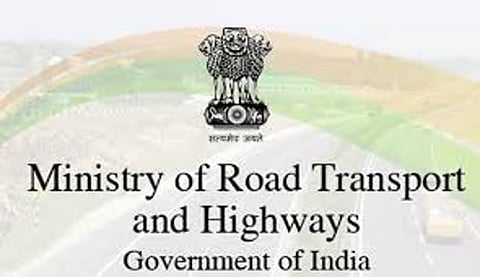
- Home
- Live Blog
- Breaking News
- Top Headlines
- Cities
- NE News
- Sentinel Media
- Sports
- Education
- Jobs

Staff Reporter
Guwahati: The Ministry of Road Transport & Highways (MoRTH) has come out with new guidelines on the design criteria for service roads and slip roads during the time of construction of National Highway projects. MoRTH has issued a circular regarding this subject and forwarded it to chief secretaries of all state governments and UTs, including the state of Assam, as well as principal secretaries or secretaries of public works departments of all states, etc.
According to the circular, it has been observed that many NH projects get delayed beyond the construction period, resulting in plying of heavy traffic on the main carriageway for a much longer duration than the construction period assumed earlier. Further, on many occasions, the traffic is diverted on service roads owing to maintenance or additional works on the main carriageway. It is also observed that in urban/semi-urban/industrial areas, the service roads end up carrying full traffic as access to the carriageway is restricted. A similar problem is encountered on National Highways carrying significant traffic intensity of more than 10,000 PCUs per day where there is construction activity being taken up on the main carriageway and traffic is to be diverted onto service roads or temporary diversion roads.
As a consequence, the service roads deteriorate rapidly, leading to premature failures and increased maintenance interventions. Therefore, it is imperative that adequate capacity enhancement and design life considerations for service roads are incorporated at the initial design stage itself, the circular says.
At present, there is no uniform scientific basis for the design of service/slip roads under such circumstances, and practices vary across projects. To ensure uniformity, serviceability and durability of service roads/slip roads during and after construction, MoRTH has issued certain guidelines:
Regarding the design traffic of service roads, the circular states that the design for service and slip roads shall be carried out using the same base traffic, growth rate, vehicle damage factor (VDF) based on prevailing axle load spectrum, and distribution factors as adopted for the design of the main carriageway.
MoRTH further states that in high rainfall areas (annual rainfall > 1500 mm, or stretches prone to waterlogging), rigid pavement shall be adopted; where the main carriageway is with rigid-type pavement, service roads and slip roads should preferably be of rigid-type pavement.
As for drainage, the circular states that all service and slip roads shall have adequate drainage as per IRC standards with proper outfall. The service road and slip road shall be completed before the start of the work on the main carriageway and continued to be maintained in the conditions in accordance with the norms specified in the contract. After the opening of traffic on the main carriageway, the service roads, including drainage works, shall be restored.
A service road is a parallel road that serves local traffic, and a slip road is a short road that connects to a main road.